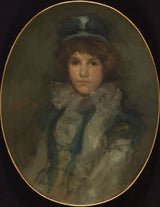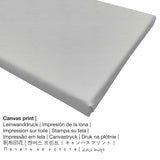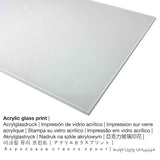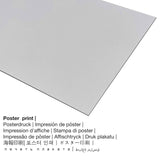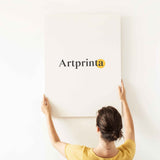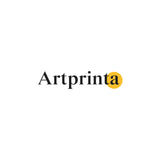James Abbott McNeill Whistler, 1898 - Blue na Coral: The Little Blue Bonnet - ọmarịcha nka.
Ụtụ gụnyere. Mbupu gbakọrọ na ndenye ọpụpụ.
nkọwapụta
In 1898 James Abbott McNeill Whistler painted this painting. The version of the artpiece was made with the exact dimensions: 32 1/2 × 27 1/4 × 3 1/4 na (82,55 × 69,22 × 8,26 cm). Oil on canvas was used by the American artist as the medium of the artwork. What is more, this artwork belongs to the art collection of Ebe ngosi nka nke Los Angeles County, nke bụ ụlọ ngosi nka nka kachasị na ọdịda anyanwụ United States, yana nchịkọta ihe karịrị 142.000 ihe na-enye ìhè afọ 6.000 nke ngosipụta nka n'ofe ụwa. Nke nkà nke oge a ngalaba ọha artpiece gụnyere na nkwanye ùgwù nke Ụlọ ihe ngosi nka nke Los Angeles County (www.lacma.org).In addition to that, the work of art has the creditline: . What is more, the alignment of the digital reproduction is in portrait format and has a ratio of 3: 4, nke pụtara na ogologo bụ 25% mkpụmkpụ karịa obosara.
Họrọ ihe gị
The product dropdown menu provides you with the opportunity to select the material and sizeaccording to your individual preferences. The following options are available for individualization:
- Bipụta akwụkwọ mmado n'ihe kwaaji: The Artprinta poster is a printed canvas paper with a granular surface structure. It is best suited for placing your art replica using a custom-made frame. Please keep in mind, that depending on the absolute size of the canvas poster print we add a white margin between 2-6cm around the print in order to facilitate the framing with your custom frame.
- Aluminom ihe eji eme ihe: Aluminium Dibond prints are prints on metal with an outstanding depth. For our Direct Aluminium Dibond print, we print the artwork onto the surface of the white-primed aluminum composite. This direct print on Aluminum Dibond is one of the most popular entry-level products and is an extremely sophisticated way to display fine art prints, as it puts 100% of the viewer’s attention on the whole artwork.
- Mbipụta kwaaji: The canvas print is a printed cotton canvas stretched on a wood stretcher. Furthermore, a printed canvas generates a cosy and comfortable feeling. Canvas prints are relatively low in weight. This means, it is easy to hang your Canvas print without additional wall-mounts. Therefore, a canvas print is suitable for all types of walls.
- Ihe odide acrylic glass: An print on acrylic glass, often referenced as a an art print on plexiglass, will change the artwork into wonderful décor and offers a great alternative to dibond and canvas art prints. The artwork is made with the help of modern UV direct print machines. The great advantage of an acrylic glass print is that sharp contrasts and small artwork details become visible with the help of the very fine gradation of the print.
Disclaimer: We try everythig possible in order to describe the products as exact as possible and to illustrate them visually. Nevertheless, the tone of the print materials and the print result may differ slightly from the image on the screen. Depending on your settings of your screen and the quality of the surface, not all colors will be printed 100% realistically. Considering that all art prints are printed and processed manually, there might as well be minor discrepancies in the motif's exact position and the size.
Nkọwa akụkọ ahaziri ahazi
| Bipụta ụdị ngwaahịa: | nka nka |
| Usoro mmeputakwa: | dijitalụ mmeputakwa |
| Produzọ mmepụta: | Mbipụta UV ozugbo (mbipụta dijitalụ) |
| Ihe ngosi: | emere na Germany |
| Ụdị ngwaahịa: | na mmepụta ihe |
| Ngwaahịa were: | ihe ndozi mgbidi, mma mgbidi |
| Nhazi onyonyo: | nhazi ihe osise |
| Oke akụkụ onyonyo: | 3: 4 ogologo ruo obosara |
| Oke onyonyo pụtara: | ogologo bụ 25% mkpụmkpụ karịa obosara |
| Nhọrọ akụrụngwa: | Mpempe akwụkwọ, akwụkwọ mmado (akwụkwọ kwaaji), mbipụta ọla (aluminium dibond), mbipụta iko acrylic (nwere ezigbo mkpuchi iko) |
| Ọdịiche dị n'okirikiri akwa akwa akwa (akwa akwa): | 30x40cm - 12x16", 60x80cm - 24x31", 90x120cm - 35x47" |
| Mbipụta iko acrylic (nke nwere ezigbo mkpuchi iko): | 30x40cm - 12x16", 60x80cm - 24x31", 90x120cm - 35x47" |
| Mpempe akwụkwọ mmado (akwụkwọ kwaaji) nha: | 30x40cm - 12x16", 60x80cm - 24x31", 90x120cm - 35x47" |
| Ụdị mbipụta aluminom dibond: | 30x40cm - 12x16", 60x80cm - 24x31", 90x120cm - 35x47" |
| ụba: | na-enweghị etiti |
Iberibe nkọwa nka
| Aha nke ihe nka: | "Blue and Coral: The Little Blue Bonnet" |
| Nhazi: | sere |
| Category: | nkà nke oge a |
| Nhazi oge: | 19th narị afọ |
| Emepụtara na: | 1898 |
| Afọ nka: | karịa afọ 120 |
| Ọkara nke ihe osise izizi: | mmanụ na kwaaji |
| Nha izizi nka: | 32 1/2 × 27 1/4 × 3 1/4 na (82,55 × 69,22 × 8,26 cm) |
| Egosiputara na: | Ebe ngosi nka nke Los Angeles County |
| Ebe ngosi nka: | Los Angeles, California, Njikota Obodo Amerika |
| Weebụsaịtị nke ihe ngosi nka: | www.lacma.org |
| License: | ngalaba ọha |
| Site n'aka: | Ụlọ ihe ngosi nka nke Los Angeles County (www.lacma.org) |
Banyere omenka
| Ihe nkiri: | James Abbott McNeill Whistler |
| Gender: | nwoke |
| Nationality: | American |
| Ọrụ onye na-ese ihe: | onye na-ese ihe |
| Mba onye si: | United States |
| Nkewa onye nka: | omenkà nke oge a |
Edobere ederede a site na nwebisiinka © , Artprinta.com (Artprinta)
What does the website of the Los Angeles County Museum of Art state about the 19th century work of art created by James Abbott McNeill Whistler? (© Copyright - Los Angeles County Museum of Art - www.lacma.org)
Living an expatriate existence, James McNeil Whistler worked primarily in Europe, first in France, then in England. Yet, he was the single most influential American artist of the nineteenth century, not only in Europe, but also in the United States. His achievement lies at the heart of the late nineteenth-century Aesthetic movement, which prized the idea of "art for art's sake." His argument that art is neither didactic nor natural was a necessary prelude for the development of the radical modernist movements of the twentieth century, primarily abstraction. No American artist of any stature after the Civil War escaped his influence. Whether landscapes, seascapes, or figure studies, Whistler's paintings are marked by his attention to the visual effects of the surface, in particular, by great variations in glazing and texture. The subject matter is often secondary, a point that he calls attention to by titling the paintings with musical terms (Nocturnes) or abstract color phrases (most famously, the portrait of his mother is Arrangement in Grey and Black). The majority of his subjects are women, elements of an ongoing investigation of what constituted the concept of the "beautiful." While many were commissioned portraits, Whistler also used young working class women selected for the pictorial effect, in what the eighteenth century called "fancy pictures." Blue and Coral: The Little Blue Bonnet is a fancy picture from the end of Whistler's career and represents his mature style. It is the largest of his oval portraits and is one of his most finished works from this period. Whistler was an experimental artist even late in life. Many of his paintings were executed thinly, in glazes, as in The Little Bonnet. The costume is deliberately sketchy — the sitter's body and hat are depicted for their colors rather than for any accuracy of detail. Her face, on the other hand, is quite fully rendered and emerges out of the dark tones of the picture with great delicacy. This balance of the human interest of the subject and the purely abstract effects of tone and texture is the hallmark of Whistler's most successful portraits. Whistler is also represented in the museum by over 150 of his famous etchings and lithographs. View more works by Whistler in LACMA's collection.

